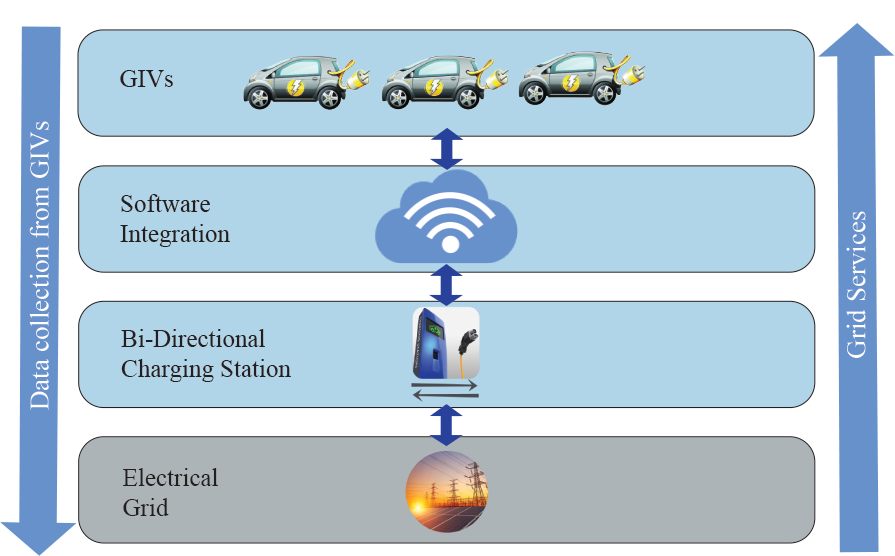by Susan Buchan
Electric vehicles and hydrogen-fueled vehicles continue gaining market share. Why should you care? With these increases, the opportunities and challenges of transportation electrification are real – and coming soon to a driveway near you! EVs are now expected to reach parity with internal combustion engine vehicles in 2022, due to steady declines in battery costs.
Initial cost was the major “perceived barrier” for consumers considering going electric. So, while uptake rates for EVs have been lackluster globally, price parity means that many, many batteries will soon be sitting in parked vehicles. Lots of batteries available can be very bad — or very good — for the electric grid.
How bad? The challenge of EVs charging on the electrical grid is well documented: Additional load on already congested or stressed sections of the distribution system, local circuit overloading, and undesirable changes in demand (i.e., when many people return home around 6 pm on weekdays and plug in during the duck curve peak).
How good? Read on!
Grid Integrated Vehicles (GIVs), Simplified
GIV systems require three major components:
1) An EV, plug in hybrid, hydrogen or fuel cell powered vehicle. While hydrogen or fuel cell vehicles need additional grid connection equipment, EVs and plug-in hybrids arrive capable of bi-directional charging (with a little help).
2) An internet connection and software that controls interaction between charging the GIV within a prescribed timeframe and discharging the vehicle battery based on the need for grid services or pricing signals. The connection and software are generally housed in . . .
3) . . . bi-directional charging stations. While these chargers are available, planning and placement in charging infrastructure programs needs to improve and increase.
Vehicle To Grid (V2G) Opportunity Generators
The potential for V2G services is much greater than you may think. Personal vehicles in the US are only driven 5% of the time. While not in use, GIVs can be signaled to store energy at optimal times (when prices and/or demand are low) and discharge energy when they can provide grid benefits.
A single 2020 compact EV (like the Nissan Leaf) has a battery capacity of 40 kWh. This is enough to provide electricity for an average household for four days; Nissan touts the Leaf as a transportation and resilience product.
By aggregating the battery capacity of thousands — and eventually millions — of parked EVs, opportunities for storing and releasing electricity to the grid can provide multiple benefits to all involved, such as:
- voltage regulation improvements for electric grid system operation and distribution which will lower costs and increase reliability
- uptake of excess electricity from variable distributed generation sources (e.g., wind, solar)
- reducing or eliminating demand charges at high-load facilities such as manufacturing plants
- lowering the cost of GIV ownership by offering incentives for the use of bidirectional charging systems at home and while traveling

One benefit in particular – grid balancing – could actually enlist idle GIVs as a demand response measure to help mitigate the charging load incurred as increasing numbers of EVs hit the road.
In fact, GIVs might be the ultimate demand response appliance. Initially, some EV drivers expressed apprehension about reduced battery life due to the increased number of charge/discharge cycles created by bi-directional charging, but research shows that intelligently controlling the conditions of V2G charging can actually increase battery life. Newer li-ion EV batteries are built to withstand the shifting demands of acceleration and deceleration.
Looking Ahead
Until recently, EVs were seen as a potential cause of electricity demand growth and changes to load curves. Part 1 of this blog explored technologies available now to better align charging schedules in order to lower emissions. But the possibilities of Vehicle to Grid (V2G), or bi-directional charging, and the enticement of accessing all that stored energy whenever it’s needed are beginning to come into focus. I’m excited about participating in the V2G future!
–Susan Buchan is E4TheFuture’s Director of Energy Projects
